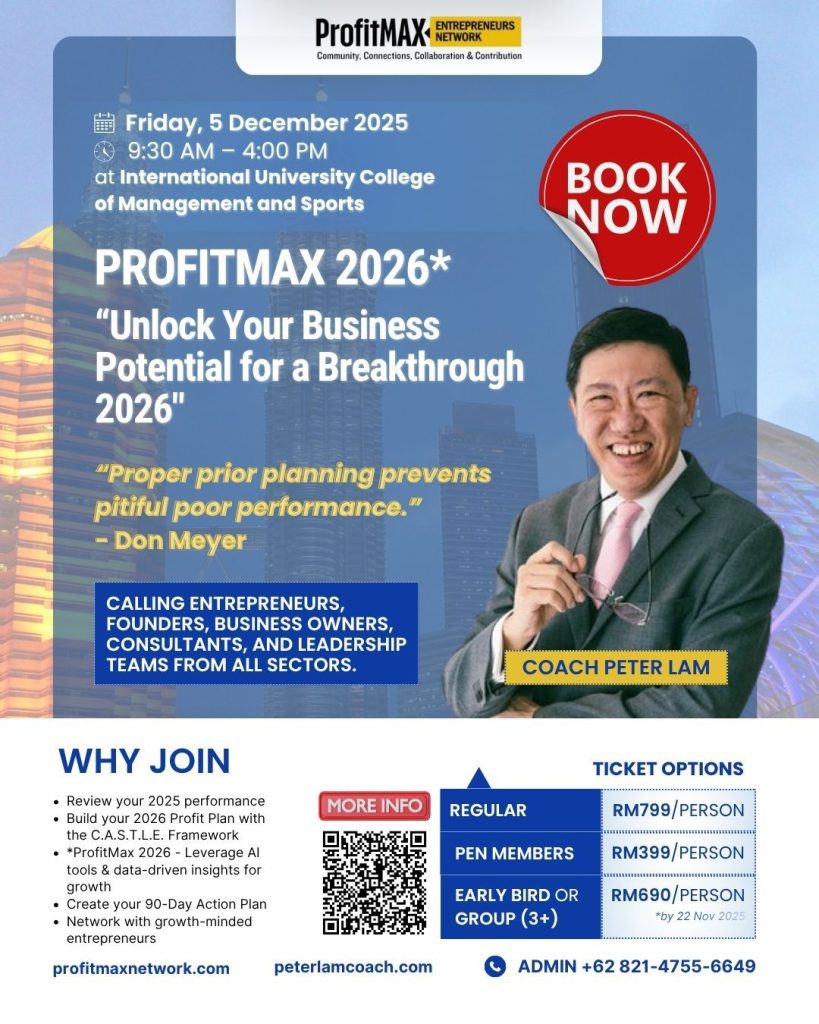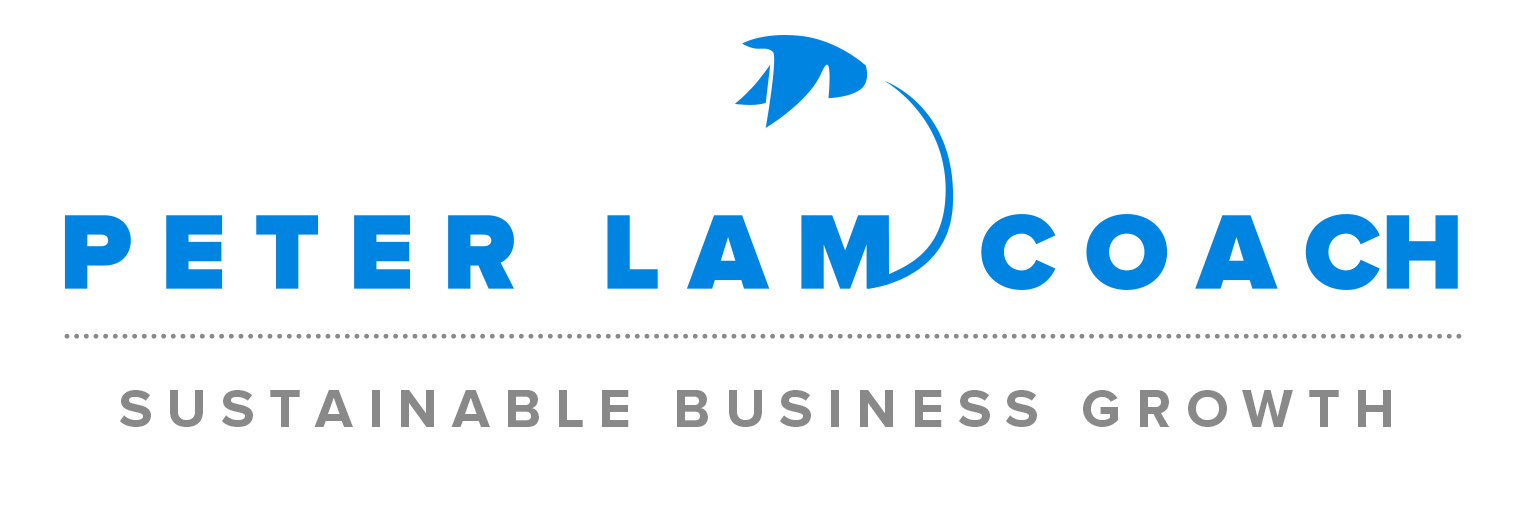
If you’re an entrepreneur, business owner, or leader… you probably agree: 2025 wasn’t a walk in the park.
Between rising costs, shifting tariffs, unpredictable markets, tightening regulations and now the pressure to understand AI, Generative AI, Agentic AI, e-Invoicing, and ESG standards, running a business often feels like juggling fire while riding a bicycle.
And if we’re being honest… many of us spent this year reacting more than leading.
But here’s the good news: The year isn’t over and your breakthrough is still within reach.
As Coach Peter Lam always says:
“We can’t control the storm, but we can adjust our sails.”
Before 2025 closes, this is the moment to pause… breathe… reflect… and prepare for a stronger, smarter, and more AI-driven 2026.
Master AI before the competition does.
INTRODUCING !!!
PROFITMAX 2026 Unlock Your Business Potential for a Breakthrough 2026
With Coach Peter Lam
Friday, 5 December 2025
9:30 AM – 4:00 PM
International University College of Management and Sports
This transformative one-day business planning workshop is designed to help entrepreneurs take control of 2026, instead of letting 2026 control them.
What You’ll Gain (Real, Actionable Results)
This isn’t another “motivation only” seminar. You’ll walk away with clarity, strategy, and tools you can use immediately:
- Review your 2025 performance with clarity
Identify what worked, what didn’t, and where the real opportunities are.
- Build a focused 2026 Profit Plan using the C.A.S.T.L.E. Framework
A proven structure used by growth-driven entrepreneurs across industries.
- Learn practical ways to apply AI for smarter business growth
Not theory, real tools, real steps, real results.
- Create your own 90-Day Action Plan
Walk out with a roadmap you can execute the next morning.
- Gain community support from fellow entrepreneurs
Connect with leaders who want to grow, collaborate, and elevate each other.
Ticket Options (Limited Seats)
Regular: RM799/person
PEN Members: RM399/person
Early Bird or Group (3+): RM690/person
valid until 25 November 2025
Register Here PEN Workshop Registration Form
If you’ve been waiting for the right moment to reset and rebuild your strategy…this is your moment.
ProfitMAX Entrepreneurs Network
Let’s end 2025 not just surviving…but stepping into 2026 ready to lead with confidence, clarity, and AI-powered growth.













